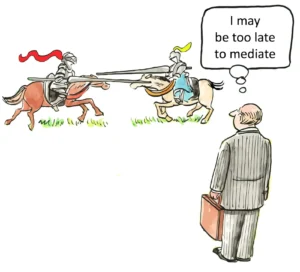Age Discrimination at Work: Legal Protections and Remedies
Age discrimination in the workplace remains a pervasive issue, affecting millions of employees across the United States. Despite legal protections, many workers over 40 continue to face unfair treatment based on their age. This article examines the legal framework surrounding age discrimination, explores available remedies, and discusses emerging trends in this critical area of employment law.
The Age Discrimination in Employment Act (ADEA) of 1967 serves as the primary federal law prohibiting age discrimination against individuals who are 40 years of age or older. The ADEA applies to employers with 20 or more employees, including state and local governments, employment agencies, labor organizations, and the federal government. Under this law, it is unlawful to discriminate against a person because of their age with respect to any term, condition, or privilege of employment, including hiring, firing, promotion, layoff, compensation, benefits, job assignments, and training.
While the ADEA provides crucial protections, age discrimination often manifests in subtle ways that can be challenging to prove. Common forms of age bias include being passed over for promotions, excluded from important projects, or subjected to negative comments about one’s age. In some cases, older workers may be targeted for layoffs or pressured to retire early. The impact of such discrimination can be severe, leading to lost wages, diminished career opportunities, and significant emotional distress.
To combat age discrimination, employees must be aware of their rights and the legal remedies available to them. The Equal Employment Opportunity Commission (EEOC) is responsible for enforcing the ADEA and investigating complaints of age discrimination. Victims of age bias may file a charge with the EEOC, which can lead to mediation, settlement, or litigation. In successful cases, remedies may include back pay, reinstatement, promotion, front pay, liquidated damages, and attorney’s fees.
It is important to note that the burden of proof in age discrimination cases lies with the plaintiff. To prevail, an employee must demonstrate that age was the “but-for” cause of the adverse employment action, meaning that the employer would not have taken the action but for the employee’s age. This standard, established by the Supreme Court in Gross v. FBL Financial Services, Inc. (2009), can be challenging to meet and has been criticized for setting a higher bar than in other types of discrimination cases.
In addition to federal protections, many states have enacted their own laws to combat age discrimination. These state laws often provide broader coverage and may offer additional remedies beyond those available under the ADEA. For example, some states extend protection to employees of smaller companies or allow for the recovery of compensatory and punitive damages, which are not available under the federal law.
The Older Workers Benefit Protection Act (OWBPA), an amendment to the ADEA, provides specific protections for older workers in the context of waivers and releases. The OWBPA sets forth strict requirements for employers seeking to obtain valid waivers of age discrimination claims, including providing employees with detailed information about the individuals affected by a layoff or exit incentive program. These requirements ensure that older workers have the opportunity to make informed decisions about their rights when faced with severance agreements or early retirement offers.
Despite these legal protections, age discrimination remains a significant problem in many workplaces. Recent studies have shown that ageism is widespread and often goes unreported. A 2024 AARP survey found that nearly two-thirds of workers aged 50 and older have experienced or witnessed age discrimination on the job. This pervasive bias not only harms individual workers but also deprives employers of the valuable skills and experience that older employees bring to the table.
One emerging trend in age discrimination law is the concept of disparate impact claims. While traditional age discrimination cases focus on intentional discrimination, disparate impact claims allege that a facially neutral policy or practice disproportionately affects older workers. The Supreme Court recognized the validity of disparate impact claims under the ADEA in Smith v. City of Jackson (2005), but such claims remain relatively rare and can be difficult to prove.
Another important development in age discrimination law is the increasing recognition of the intersection between age and other protected characteristics. For example, older women may face compounded discrimination based on both age and gender, a phenomenon sometimes referred to as the “double jeopardy” of ageism and sexism. Courts and policymakers are beginning to grapple with how to address these complex forms of discrimination effectively.
The COVID-19 pandemic has brought new challenges and concerns related to age discrimination. As businesses adapted to remote work and economic pressures, some older workers found themselves disproportionately affected by layoffs or faced increased pressure to retire. Additionally, concerns about health risks associated with the virus led some employers to make decisions that could be viewed as discriminatory against older workers. These issues have sparked new debates about the scope and application of age discrimination laws in the context of public health emergencies.
One area of ongoing legal debate is the question of whether job applicants, as opposed to current employees, are protected from disparate impact discrimination under the ADEA. In 2024, the Supreme Court declined to resolve a circuit split on this issue, leaving uncertainty about the extent of protections for older job seekers. This gap in the law may leave some older workers vulnerable to discriminatory hiring practices that have a disproportionate impact on their ability to secure employment.
The rise of artificial intelligence and algorithmic decision-making in hiring and employment practices has also raised new concerns about age discrimination. While these technologies promise to increase efficiency and reduce human bias, there is growing evidence that AI systems can perpetuate or even exacerbate existing biases, including those based on age. Policymakers and courts are beginning to grapple with how to ensure that these new technologies do not become a vehicle for age discrimination.
To address these challenges, some advocates are calling for strengthening the ADEA and other anti-discrimination laws. Proposed reforms include lowering the burden of proof for age discrimination claims, expanding the law’s coverage to smaller employers, and increasing the damages available to successful plaintiffs. Additionally, there is growing support for initiatives to promote age diversity and combat ageist stereotypes in the workplace.
Employers play a crucial role in preventing age discrimination and fostering inclusive work environments. Best practices include implementing robust anti-discrimination policies, providing regular training on age bias, and ensuring that employment decisions are based on objective criteria rather than age-related stereotypes. Some companies have also adopted “blind” hiring practices to reduce the potential for age bias in the recruitment process.
For employees facing age discrimination, it is essential to document any incidents of bias and follow the appropriate procedures for reporting such behavior within their organization. Keeping detailed records of discriminatory comments, actions, or policies can be crucial if legal action becomes necessary. Employees should also be aware of the time limits for filing a charge with the EEOC or state agencies, as failing to meet these deadlines can result in the loss of legal rights.
Mediation and alternative dispute resolution methods have become increasingly important in resolving age discrimination claims. Many EEOC charges are resolved through mediation, which can provide a faster and less adversarial process for addressing workplace disputes. Employers and employees alike may benefit from exploring these options as alternatives to lengthy and costly litigation.
The role of labor unions in combating age discrimination should not be overlooked. Collective bargaining agreements often include provisions that protect older workers from discrimination and provide mechanisms for addressing age-related grievances. Unions can also advocate for policy changes and raise awareness about age discrimination issues in the workplace.
As the workforce continues to age, the importance of addressing age discrimination will only grow. By 2024, it is projected that workers aged 55 and older will make up nearly a quarter of the labor force. This demographic shift underscores the need for robust legal protections and proactive measures to ensure that older workers are treated fairly and their contributions are valued.
One area of potential legal development is the concept of reverse age discrimination. While the ADEA was primarily designed to protect older workers, some courts have recognized claims by younger workers who allege discrimination in favor of older employees. However, the extent to which reverse age discrimination is actionable under the ADEA remains a subject of debate and may require further clarification from the courts or legislative action.
The intersection of age discrimination and disability discrimination is another area of growing legal complexity. As workers age, they may develop health conditions that qualify as disabilities under the Americans with Disabilities Act (ADA). Employers must navigate the requirements of both the ADEA and the ADA when making employment decisions affecting older workers with disabilities. This intersection can create challenging legal questions about reasonable accommodations and the boundaries of an employer’s obligations.
The global nature of many businesses has also raised questions about the extraterritorial application of U.S. age discrimination laws. While the ADEA generally applies to U.S. citizens working for American companies abroad, the extent of its reach in multinational contexts can be complex. Courts have grappled with issues such as whether foreign-based subsidiaries of U.S. companies are subject to the ADEA and how to apply the law when foreign legal systems have different approaches to age discrimination.
In the realm of employee benefits, age discrimination issues can arise in the context of pension plans, health insurance, and other benefits programs. The ADEA includes specific provisions governing employee benefit plans, but the application of these rules can be complex. For example, the law allows for certain age-based distinctions in benefit plans, provided they are justified by cost considerations. Navigating these exceptions requires careful analysis to ensure compliance with both the letter and spirit of the law.
The role of workplace culture in perpetuating or combating age discrimination cannot be overstated. Organizations that value diversity and inclusion across all age groups are more likely to avoid age discrimination claims and benefit from the contributions of a multigenerational workforce. Employers should strive to create an age-inclusive culture by challenging ageist stereotypes, promoting intergenerational mentoring programs, and recognizing the unique strengths that workers of different ages bring to the table.
As technology continues to reshape the workplace, digital literacy has become an increasingly important issue in age discrimination cases. While many older workers are highly proficient with technology, stereotypes about older employees’ tech skills persist. Employers should be cautious about making assumptions about technological abilities based on age and should provide training and support to ensure that all employees can effectively use necessary workplace technologies.
The concept of constructive discharge is relevant in many age discrimination cases. This occurs when an employer makes working conditions so intolerable that a reasonable person would feel compelled to resign. Older workers who are subjected to severe or pervasive age-based harassment may have a claim for constructive discharge, even if they were not formally terminated. Courts consider the totality of the circumstances in determining whether a constructive discharge has occurred.
The #MeToo movement has had ripple effects beyond gender discrimination, raising awareness about workplace harassment and discrimination more broadly, including age-based harassment. This increased focus on workplace conduct has led some organizations to reevaluate their policies and practices related to all forms of discrimination and harassment, potentially benefiting older workers who face age-based mistreatment.
In conclusion, age discrimination remains a significant challenge in the modern workplace, despite decades of legal protections. As the workforce ages and new forms of bias emerge, it is crucial for employees, employers, and policymakers to remain vigilant in combating age discrimination. By understanding their rights, implementing best practices, and advocating for necessary reforms, stakeholders can work towards creating more equitable and inclusive work environments for employees of all ages.
Website citations:
- https://www.eeoc.gov/age-discrimination
- https://www.dol.gov/agencies/oasam/centers-offices/civil-rights-center/internal/policies/age-discrimination
- https://www.aarp.org/politics-society/advocacy/info-2024/workplace-age-discrimination-still-pervasive.html
- https://www.workplacefairness.org/age-discrimination
- https://www.americanbar.org/groups/crsj/publications/human_rights_magazine_home/the-state-of-healthcare-in-the-united-states/racial-disparities-in-health-care/
- https://www.ncsl.org/labor-and-employment/age-discrimination-in-employment-act-adea
- https://www.forbes.com/sites/nextavenue/2024/01/15/how-to-prove-age-discrimination-in-the-workplace/?sh=7c8f9f3e5f8a













